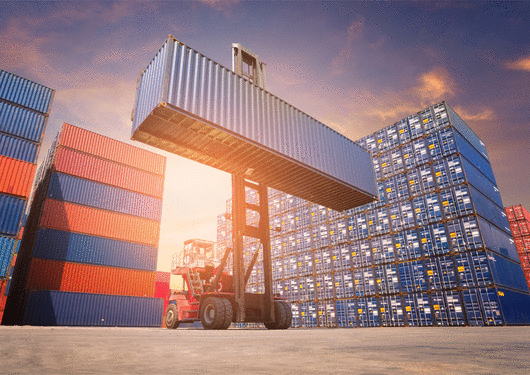
Visit Our Sponsors |
|
|
|
|
|
|
|
|
|
|
|
|
|
|
|
|
|
|
|
|
|
|
|
|
|
|
|
|
|
|
|
|
|
|
|
|
|
|
|
|
|
|
|
|
|
|
|
|
|
|
|
|
|
|
|
|
|
|
|
|

The inbound U.S. international supply chain relies on multiple parties to successfully move a container from its country of origin to the delivery destination - usually a shipper's distribution center. An intact shipment involves a steamship line, a customs broker, a port or terminal, at least one or more dray carriers and sometimes a rail carrier and/or a third-party provider to complete the move. There are even more operators involved for freight that is transloaded.
For all involved, operational data and forecasting information are often fragmented and difficult to obtain, creating a challenge for planning operations and handling surges, and maximizing asset and driver utilization. This complexity has increased significantly as the steamship lines and alliances require shippers and operators to manage freight in the same trade lane through potentially different port terminals depending on the vessel string.
The situation at the ports continues to create variability in the dray community — especially in Los Angeles. Losing drivers for two to four hours in a line at a port or to an unplanned chassis chase can significantly curtail the delivery of containers for that day and cause a delay in picking up loaded containers, as well as congestion in yards for empties to be returned.
Shippers have seen the cost of port drayage increase. The system is generating millions of dollars of exception payments to drivers, lost turns on equipment and extra fuel consumption because of the cost of this complexity and operational variability. Those costs are passed down to the shippers and ultimately to the consumer.
There are steps that shippers can take to mitigate their individual exposure to these costly and inefficient challenges, including:
Know the port and inland operating plans for your freight and work with steamship line carriers to ensure that boxes are loaded to strings that give you on-dock rail service for inland destinations, and efficiently performing terminals for boxes discharged in local markets.
Be realistic with providers when it comes to unexpected costs.
Give dray providers latitude to do some day-side loads to help balance the efficiency of their truck fleet, and recognize extra costs and productivity challenges when drivers are unexpectedly caught in terminal disruptions or are required to make unplanned moves.
Work with supply chain providers to develop greater transparency and forecasting of inbound and outbound freight.
Design yard operations that get drivers in and out as efficiently as possible.
Use a third party who has greater resources and can focus on managing the complexity on a daily basis.
While these steps can help, there is only so much an individual shipper can do. Operations run efficiently when there is consistency and advance notice of what needs to happen. Operators need shipment information to be available in advance, accurate and easy to retrieve. We need to look at what we can do as an industry to rebuild the efficiency that has been lost and find ways of managing this new complexity better.
The Outlook
The industry has the ability to solve many of the problems that we currently face, or at least make them significantly better. However, it requires that we change substantially — not just what we do but how we approach the problem. We must all work together and create collaborative, low-cost, efficient industry solutions — something that has been difficult to achieve despite several attempts that are under way. The total value we can create by finding a solution far exceeds any incremental costs that would be incurred. We need to ensure the value flows back to those who incur the costs of making the changes and that we have all the stakeholders at the table helping to design a better future state.
RELATED CONTENT
RELATED VIDEOS
Timely, incisive articles delivered directly to your inbox.







